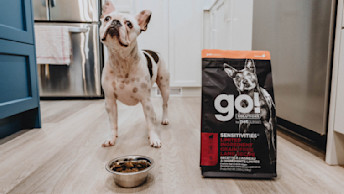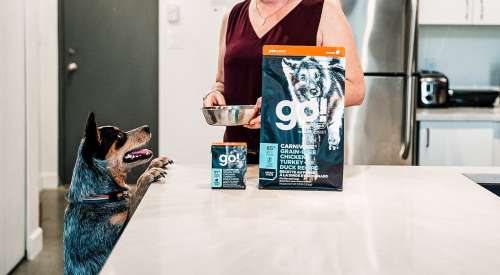January 7, 2022
How to Transition Your Dog to a New Food

Maybe you are looking to treat a food sensitivity by introducing new protein sources into the diet, or maybe you simply want to switch up the flavours and ingredients to keep things interesting for your furry friend. Whatever the case, changing your dog’s food is more complex than simply pouring their new diet into a bowl.
The digestive process is extremely complex and delicate, requiring various enzymes and naturally occurring bacteria to be successful. When providing a new diet, it is important to slowly transition your dog to the new food, giving their bodies a chance to adjust to this change.
This transition period can be between 10-14 days long, depending on your dog’s sensitivity to change:
Day 1 & 2: Feed 80% of your dog’s old food with 20% of the new food
Day 3 & 4: Feed 60% of your dog’s old food with 40% of the new food
Day 5 & 6: Feed 40% of your dog’s old food with 60% of the new food
Day 7, 8 & 9: Feed 20% of your dog’s old food with 80% of the new food
Day 10 & Forever: Feed 100% new food
Since the digestive process is so delicate, diarrhea and/or vomiting can be normal during this transition period. If your dog is experiencing any sort of digestive upset, try slowing down the process, allowing their digestive tract more time to adjust. You can do this by reducing the amount of new food provided at the next feeding.
Some helpful tips!
To limit the amount of digestive upset your pet may experience during this transition period, try these paw-some tips:
Maintain hydration
Limit treats/other food sources
Avoid mixing raw and dry food
Kibble takes longer to digest than raw diets. If you are transitioning your dog from a raw diet to a dry food, consider feeding these diets a few hours apart to maximize the digestion of both, while minimizing the risk for any ruff digestive symptoms.
If your dog is more sensitive to dietary changes and you want to lower their risk for digestive upset further, check out our selection of sensitivity recipes balanced for pets with specific dietary needs: Go! Solutions Recipes for Dogs.


